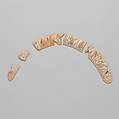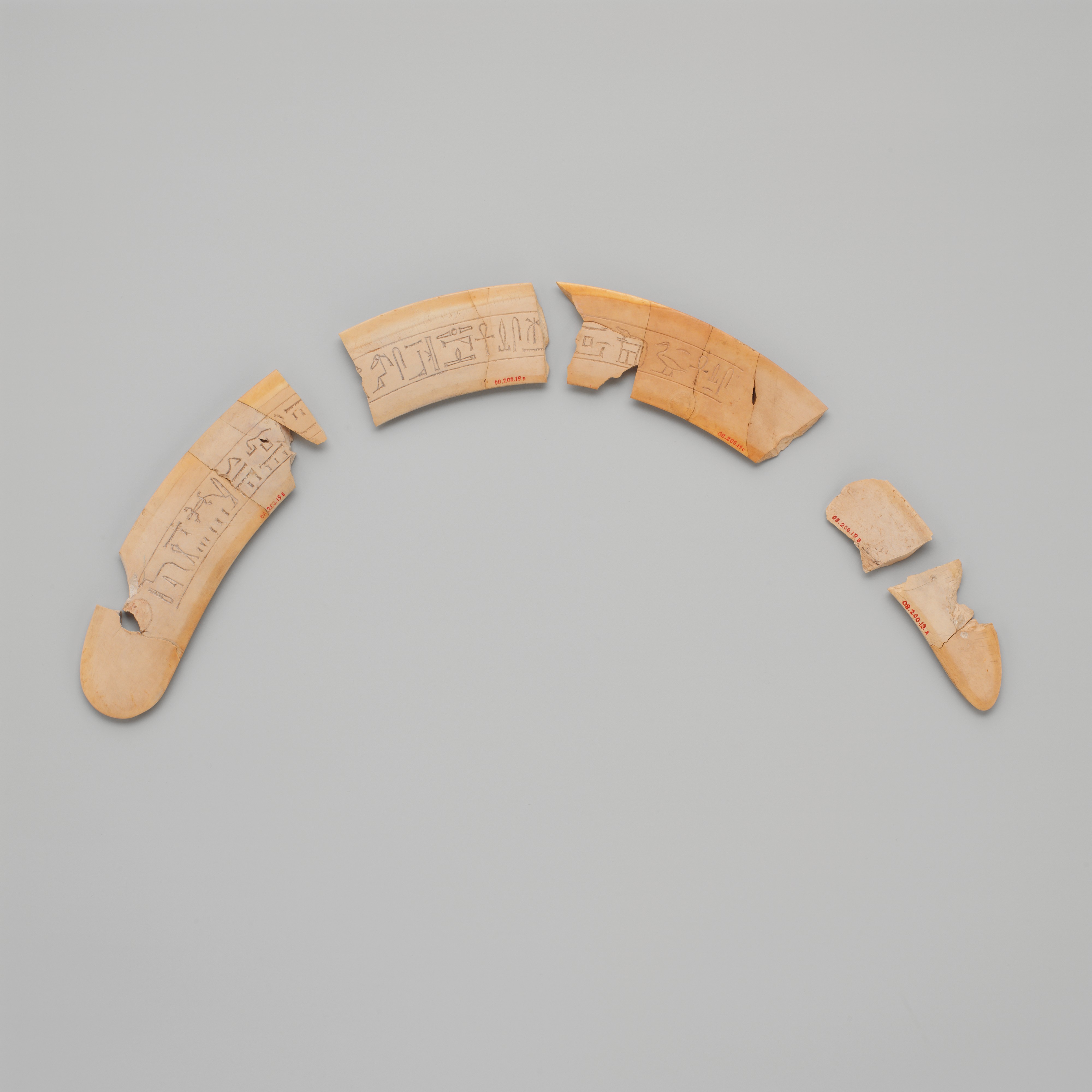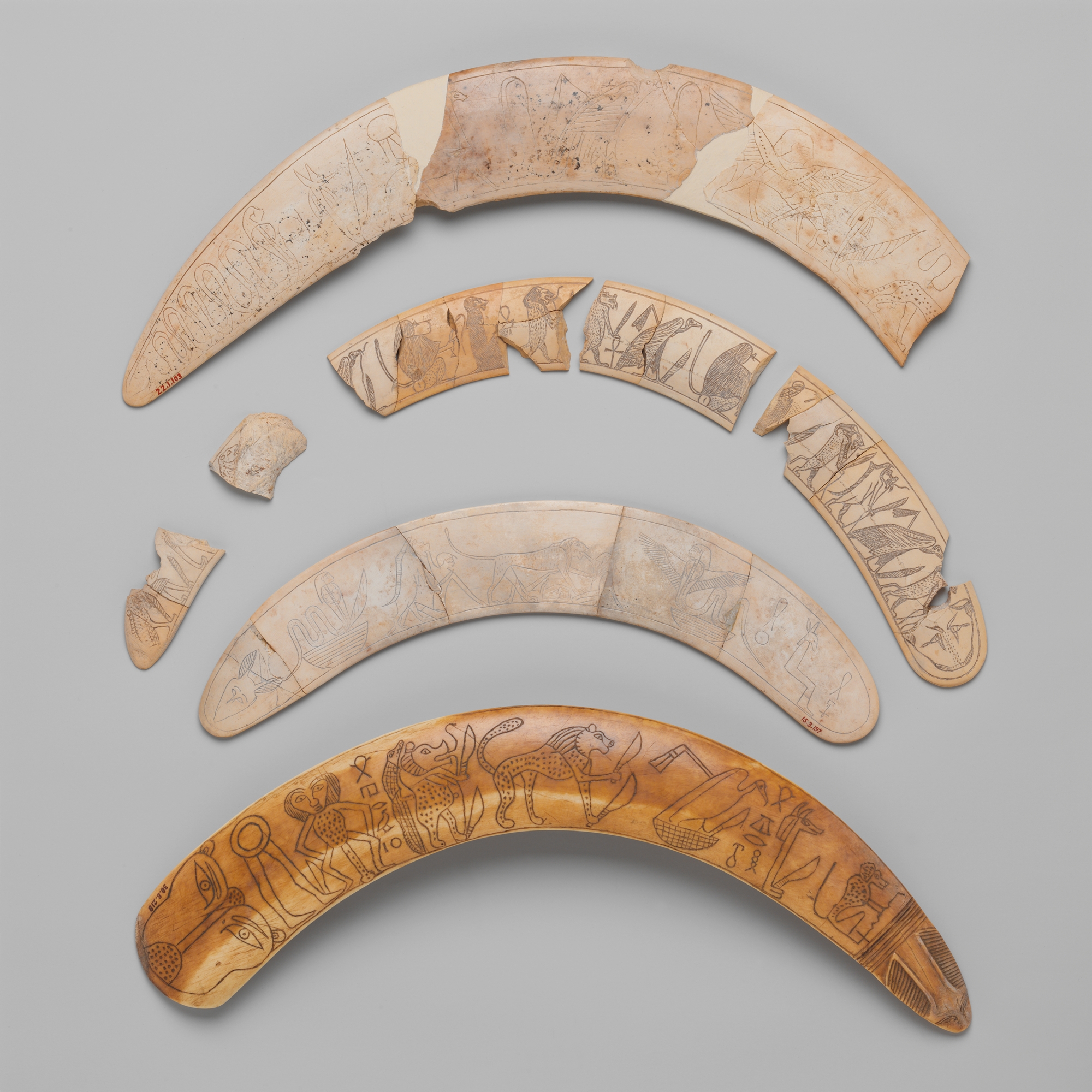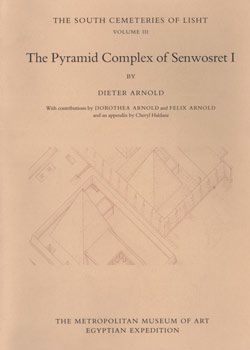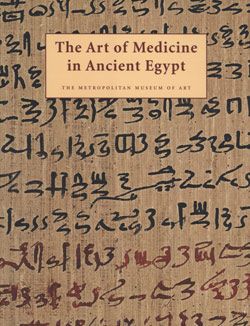Magic wand
Middle Kingdom
Wands such as this were a common feature in burials of the late Middle Kingdom. This one shows signs of wear on one tip, suggesting that it was used over a period of time before being placed in the tomb. The wand is decorated on one side with the figures of protective deities most of whom carry knives to ward off evil spirits.
The purpose of the wands is revealed by an inscription carved on the back of this
one:
"Recitation by the many protectors: We have come that we may extend our protection around the healthy child Minhotep, alive, sound, and healthy, born of the noblewoman Sitsobek, alive, sound, and healthy. "
Other wands (15.3.197; 30.8.218) are inscribed on the front with the words "protection by day" and "protection by night." The texts indicate that the wands were used to defend infants against malign forces. Having provided defense against illness during life, after death the wands were placed in the tomb to ensure the continued protection of the deceased's spirit in its eternal afterlife.
Due to rights restrictions, this image cannot be enlarged, viewed at full screen, or downloaded.
This artwork is meant to be viewed from right to left. Scroll left to view more.
